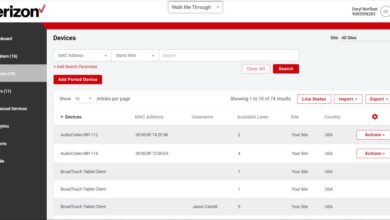Key Account Management: 7 Powerful Strategies to Skyrocket Success
In today’s hyper-competitive business landscape, mastering Key Account Management isn’t just a strategy—it’s a necessity. Discover how top companies leverage powerful techniques to build unbreakable client relationships and drive explosive growth.
What Is Key Account Management and Why It Matters

Key Account Management (KAM) is a strategic approach used by organizations to manage and grow their most valuable customer relationships. Unlike traditional account management, which often treats all clients similarly, KAM focuses on high-value, high-potential accounts that contribute significantly to revenue and long-term business success. These key accounts are not just customers—they are strategic partners.
According to a report by CSO Insights, companies that implement formal Key Account Management programs see up to 20% higher win rates on strategic deals compared to those without structured approaches. This highlights the transformative power of KAM in driving sustainable growth and competitive advantage.
Defining Key Account Management
Key Account Management is more than just relationship management; it’s a holistic, cross-functional strategy that aligns sales, marketing, service, and product development around the needs of critical clients. The goal is to deepen engagement, increase customer lifetime value, and co-create solutions that deliver mutual benefits.
The Chartered Institute of Marketing defines KAM as “a disciplined and strategic approach to doing business with customers for mutual benefit.” This means moving beyond transactional interactions to building long-term, value-driven partnerships.
- Focuses on high-value, strategic customers
- Emphasizes long-term relationship building
- Requires cross-functional collaboration
- Drives mutual growth and innovation
Key Account vs. Regular Account: The Critical Difference
Not all customers are created equal. A regular account might generate consistent but modest revenue, while a key account often represents a significant portion of a company’s income and strategic direction. For example, a single key account could account for 10–20% of total annual revenue.
The distinction lies not just in revenue but in strategic importance. Key accounts often influence product development, serve as reference clients, and open doors to new markets. Managing them requires a dedicated team, customized strategies, and continuous value delivery.
“A key account is not just a big customer—it’s a business partner with whom you co-create value.” — Neil Rackham, author of ‘Major Account Sales Strategy’
The Evolution of Key Account Management
Key Account Management has evolved from a simple sales tactic into a sophisticated business discipline. Its roots trace back to the 1970s when large corporations began recognizing the need for specialized handling of major clients. Over the decades, KAM has transformed in response to globalization, digitalization, and changing customer expectations.
Today, KAM is no longer confined to B2B sectors. It’s increasingly relevant in B2C, healthcare, technology, and even government contracting. The shift from transactional selling to consultative partnership models has made KAM a cornerstone of modern business strategy.
Historical Development of Key Account Management
The concept of managing key clients strategically began in the industrial sector, where companies like IBM and GE started assigning dedicated teams to major accounts. These early efforts focused on improving service delivery and reducing churn among high-value clients.
By the 1990s, the rise of CRM systems and data analytics enabled more sophisticated segmentation and personalization. Companies began using customer profitability analysis to identify which accounts deserved strategic attention. This marked the transition from reactive account servicing to proactive relationship management.
- 1970s: Emergence of dedicated account managers
- 1990s: Integration with CRM and data analytics
- 2000s: Shift toward consultative and solution-based selling
- 2010s–Present: Digital transformation and AI-driven insights
Modern Trends Shaping Key Account Management
Today’s Key Account Management is shaped by several powerful trends. Digital transformation has enabled real-time communication, predictive analytics, and automated reporting. Artificial intelligence and machine learning are now being used to anticipate customer needs and recommend next-best actions.
Another major trend is the increasing expectation for personalization. Key accounts expect tailored solutions, not off-the-shelf products. According to Salesforce’s State of the Connected Customer report, 84% of customers say being treated like a person, not a number, is crucial to winning their business.
Additionally, the rise of subscription-based and outcome-based business models has shifted the focus from one-time sales to continuous value delivery. This makes ongoing relationship management even more critical.
Core Principles of Effective Key Account Management
Successful Key Account Management is built on a foundation of strategic principles that guide every interaction and decision. These principles ensure that the relationship remains aligned with both the client’s objectives and the provider’s business goals. Without them, even the most well-intentioned KAM efforts can falter.
Organizations that excel in KAM don’t just follow best practices—they institutionalize them. They create frameworks, train teams, and measure performance against clear KPIs. This structured approach turns KAM from a role into a repeatable, scalable process.
Strategic Alignment with Customer Goals
One of the most critical principles of Key Account Management is aligning your strategy with the customer’s business objectives. This means understanding not just what the client buys, but why they buy it. What are their strategic priorities? What challenges are they facing? How can your organization help them succeed?
For example, if a key account is focused on digital transformation, your KAM strategy should include solutions that support cloud migration, data integration, or automation. This alignment builds trust and positions your company as a strategic advisor, not just a vendor.
A study by Gartner found that 75% of high-performing key account managers spend at least 30% of their time understanding the customer’s business environment and strategic roadmap.
Proactive Value Creation
Proactivity is the hallmark of exceptional Key Account Management. Instead of waiting for the client to request help, top KAM professionals anticipate needs and deliver value before it’s asked for. This could mean sharing market insights, suggesting process improvements, or introducing new technologies that solve emerging challenges.
For instance, a key account manager at a logistics company might analyze shipping patterns and recommend route optimizations that reduce costs by 15%. This kind of initiative strengthens the relationship and demonstrates deep expertise.
- Anticipate customer needs through data analysis
- Deliver insights and recommendations proactively
- Co-develop solutions that address future challenges
“The best key account managers don’t sell products—they solve problems.” — Jill Konrath, sales strategist and author
Building a Winning Key Account Management Team
A successful Key Account Management program depends on having the right people in place. This isn’t just about hiring experienced salespeople—it’s about building a team with a unique blend of strategic thinking, emotional intelligence, and cross-functional leadership skills.
Key account managers (KAMs) are not traditional sales reps. They are strategic leaders who must navigate complex organizational dynamics, both within their own company and the client’s. Their role requires influence without authority, making collaboration and communication essential.
Essential Skills for Key Account Managers
To excel in Key Account Management, professionals need a diverse skill set that goes beyond sales techniques. Here are the most critical competencies:
- Strategic Thinking: Ability to see the big picture and align actions with long-term goals.
- Business Acumen: Understanding of finance, operations, and industry trends to speak the client’s language.
- Emotional Intelligence: Skill in building trust, managing conflict, and reading interpersonal dynamics.
- Negotiation & Influence: Capability to drive consensus across multiple stakeholders.
- Project Management: Coordination of internal teams to deliver complex solutions on time.
Training and continuous development are crucial. Many organizations invest in certification programs such as those offered by the Key Account Management Institute, which provides globally recognized credentials.
Structuring the Key Account Management Organization
How you structure your KAM team can make or break its effectiveness. Common models include:
- Vertical Model: KAMs specialize by industry (e.g., healthcare, manufacturing).
- Geographic Model: Teams are organized by region or territory.
- Matrix Model: Combines industry and geography for maximum coverage.
- Center of Excellence: A centralized team that supports field KAMs with strategy, tools, and training.
The choice depends on your customer base, product complexity, and organizational size. For global enterprises, a matrix or center-of-excellence model often works best, ensuring consistency and scalability.
According to a McKinsey study, companies with a formal KAM organizational structure report 30% higher customer satisfaction and 25% greater revenue growth from key accounts.
Key Account Planning: The Blueprint for Success
Every successful Key Account Management initiative starts with a robust account plan. This document serves as a strategic roadmap, outlining goals, challenges, stakeholders, and action steps. Without a plan, KAM efforts risk becoming reactive and disjointed.
A well-crafted key account plan aligns internal teams, sets measurable objectives, and ensures that every interaction adds value. It’s not a static document—it evolves as the relationship grows and market conditions change.
Components of a Comprehensive Key Account Plan
An effective key account plan includes several core components:
- Customer Overview: Company background, industry position, and strategic goals.
- Stakeholder Map: Identification of decision-makers, influencers, and end-users.
- Current Relationship Status: History of interactions, past wins, and pain points.
- Opportunity Pipeline: Identified growth areas and potential projects.
- Action Plan: Specific initiatives, timelines, and responsible parties.
- Success Metrics: KPIs such as revenue growth, customer satisfaction, and retention rate.
Tools like Salesforce, HubSpot, or specialized KAM platforms can help automate and track these plans, ensuring accountability and visibility.
How to Develop a Strategic Account Plan
Creating a strategic account plan involves several steps:
- Research: Gather intelligence on the client’s business, competitors, and market trends.
- Engage Stakeholders: Conduct discovery meetings with key contacts to understand their priorities.
- Analyze Gaps: Identify where your solutions can add value or solve unmet needs.
- Define Objectives: Set SMART goals (Specific, Measurable, Achievable, Relevant, Time-bound).
- Align Internally: Ensure sales, marketing, product, and service teams are on the same page.
- Review & Update: Revisit the plan quarterly to reflect changes and progress.
A real-world example: A software company working with a major retailer developed a key account plan focused on improving supply chain visibility. By aligning their IoT and analytics solutions with the retailer’s inventory optimization goals, they secured a $5M expansion deal within 12 months.
“A great account plan doesn’t just document the past—it shapes the future.” — Strategic Account Management Association
Measuring Success in Key Account Management
What gets measured gets managed. In Key Account Management, tracking performance is essential to ensure that strategies are delivering results. However, success isn’t just about revenue—it’s about the health and depth of the relationship.
Leading organizations use a balanced scorecard approach, combining financial, operational, and relational metrics to get a complete picture of KAM performance.
Key Performance Indicators (KPIs) for Key Account Management
Here are the most important KPIs to track:
- Revenue Growth: Year-over-year increase in sales from key accounts.
- Profit Margin: Ensuring growth is profitable, not just top-line.
- Customer Retention Rate: Percentage of key accounts retained annually.
- Net Promoter Score (NPS): Measures customer loyalty and satisfaction.
- Engagement Frequency: Number of strategic meetings per quarter.
- Share of Wallet: Percentage of the client’s total spend captured.
For example, a telecommunications provider increased its share of wallet from 40% to 65% in two years by focusing on NPS and engagement frequency, leading to cross-selling of cloud and cybersecurity services.
Using Data and Analytics to Drive Decisions
Modern Key Account Management relies heavily on data. CRM systems, customer feedback platforms, and AI-powered analytics provide real-time insights into account health.
Advanced tools can predict churn risk, identify upsell opportunities, and recommend personalized content. For instance, Microsoft Dynamics 365 uses AI to analyze email sentiment and meeting outcomes, helping KAMs stay ahead of potential issues.
According to a Harvard Business Review study, data-driven KAM teams achieve 15–20% higher growth rates than those relying on intuition alone.
Common Challenges in Key Account Management and How to Overcome Them
Even the best Key Account Management programs face obstacles. From internal silos to changing client priorities, KAM professionals must navigate a complex landscape. Recognizing these challenges early and implementing solutions is key to long-term success.
Many organizations underestimate the difficulty of sustaining momentum in KAM. It’s not enough to win the account—maintaining trust, delivering consistent value, and adapting to change are ongoing requirements.
Internal Alignment and Cross-Functional Collaboration
One of the biggest hurdles in Key Account Management is getting internal teams to work together. Sales, marketing, support, and product development often operate in silos, making it difficult to deliver a unified customer experience.
Solution: Establish a Key Account Management Council or steering committee that includes leaders from each department. This group can align priorities, resolve conflicts, and ensure accountability.
Regular cross-functional reviews of key accounts help maintain focus. For example, a monthly “Account Health Check” meeting can bring together all stakeholders to assess progress and adjust strategies.
Managing Customer Expectations and Churn Risk
High-value clients have high expectations. A single service failure or communication gap can damage trust and lead to churn. In fact, Bain & Company found that 60–80% of customers who leave say they were “satisfied” or “very satisfied” before defecting—highlighting the danger of complacency.
To mitigate churn risk, KAMs must be vigilant. Implement early warning systems using metrics like declining engagement, missed meetings, or negative feedback. Proactive check-ins and value reviews can re-engage at-risk accounts.
- Conduct quarterly business reviews (QBRs)
- Deliver unexpected value (e.g., free training, market insights)
- Build relationships beyond the primary contact
“The key to retention is not just meeting expectations—but exceeding them consistently.” — Fred Reichheld, creator of the Net Promoter System
Future of Key Account Management: Trends and Predictions
The future of Key Account Management is being shaped by technology, changing buyer behavior, and the growing importance of customer experience. As businesses become more interconnected, the role of the key account manager will evolve from a sales leader to a strategic orchestrator.
Organizations that embrace innovation and adaptability will gain a significant competitive edge. The KAM of tomorrow will be data-savvy, digitally fluent, and deeply focused on co-creation and sustainability.
Digital Transformation and AI in Key Account Management
Artificial intelligence and automation are revolutionizing how KAMs operate. AI-powered tools can analyze customer data to predict needs, recommend next steps, and even draft personalized communications.
Chatbots and virtual assistants are being used to handle routine inquiries, freeing up KAMs to focus on strategic activities. Predictive analytics can flag at-risk accounts before issues arise, enabling proactive intervention.
For example, Salesforce’s Einstein AI analyzes email patterns and meeting notes to suggest optimal follow-up actions, improving response times and relationship quality.
The Rise of Outcome-Based Selling
Customers no longer want products—they want results. Outcome-based selling ties the value of your offering directly to measurable business outcomes, such as increased efficiency, reduced costs, or improved customer satisfaction.
In Key Account Management, this means shifting from selling features to guaranteeing performance. For instance, a manufacturing company might offer a “pay-per-part” model where the client only pays for functional components, not the machinery itself.
This model builds deeper trust and aligns incentives. According to a Deloitte report, companies using outcome-based models report 25% higher customer retention and 30% faster deal closure.
What is Key Account Management?
Key Account Management (KAM) is a strategic approach to managing and growing relationships with an organization’s most valuable customers. It involves dedicated resources, customized strategies, and cross-functional collaboration to deliver sustained value and drive mutual growth.
How do you identify a key account?
A key account is typically identified based on criteria such as revenue potential, strategic importance, growth opportunity, and influence in the market. Companies often use customer segmentation models and profitability analysis to determine which accounts qualify as “key.”
What skills are essential for a key account manager?
Essential skills include strategic thinking, business acumen, emotional intelligence, negotiation, and project management. Strong communication and the ability to influence without authority are also critical for success.
How often should you review a key account plan?
Key account plans should be reviewed at least quarterly. However, major changes in the client’s business, market conditions, or internal strategy may require more frequent updates to ensure alignment and responsiveness.
What tools are used in Key Account Management?
Common tools include CRM platforms (e.g., Salesforce, HubSpot), account planning software, data analytics tools, and AI-driven insights engines. Specialized KAM platforms like KAMTech offer tailored solutions for strategic account management.
Key Account Management is no longer a luxury—it’s a strategic imperative. By focusing on high-value relationships, aligning with customer goals, and leveraging data and technology, organizations can unlock unprecedented growth and loyalty. The future belongs to those who see their key accounts not as customers, but as partners in innovation and success.
Further Reading:






